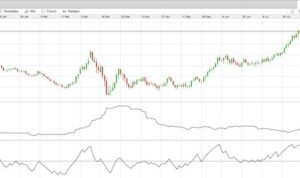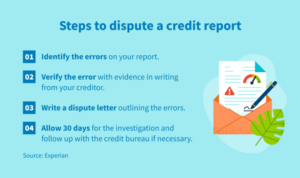Get ready to dive into the world of options trading strategies! From fundamental analysis to risk management techniques, this guide will take you on a journey through the intricacies of the options market. So buckle up and let’s explore the exciting realm of options trading strategies together.
Options trading is a dynamic field that requires a strategic approach to maximize profits and minimize risks. By understanding different strategies and techniques, traders can make informed decisions and navigate the market with confidence.
Overview of Options Trading Strategies

Options trading involves buying and selling contracts that give the holder the right, but not the obligation, to buy or sell an underlying asset at a specified price before the expiration date. It allows investors to speculate on the price movement of the underlying asset without actually owning it.
Types of Options Trading Strategies
- Covered Call: Involves owning the underlying asset and selling a call option on the same asset.
- Long Straddle: Involves buying a call and a put option with the same strike price and expiration date.
- Iron Condor: Involves selling an out-of-the-money call and put option while buying a further out-of-the-money call and put option.
- Strangle: Involves buying an out-of-the-money call and put option with the same expiration date.
Importance of having a well-defined options trading strategy:
- Minimizes risk by setting clear guidelines for entry and exit points.
- Helps in managing emotions and avoiding impulsive decisions.
- Improves consistency in trading and increases the chances of success over the long term.
Fundamental Analysis Strategies
Fundamental analysis is a method used to evaluate securities by analyzing the intrinsic value of the asset. In options trading, fundamental analysis can be used to assess the underlying security of the option contract, helping traders make informed decisions based on the financial health of the company.
Comparing Fundamental Analysis Strategies
- Quantitative Analysis: This strategy involves analyzing financial statements, ratios, and other numerical data to evaluate the company’s performance.
- Qualitative Analysis: This approach focuses on non-numeric factors such as management team, industry trends, and competitive positioning to assess the company’s potential.
Examples of Fundamental Analysis Influence
- Company Earnings: Positive earnings reports can lead to an increase in the stock price, impacting the value of the underlying asset in options trading.
- Industry News: Events like mergers, acquisitions, or regulatory changes can affect the company’s stock price, influencing options trading decisions.
- Macroeconomic Factors: Economic indicators like interest rates, inflation, and employment data can impact the overall market sentiment, influencing options trading strategies.
Technical Analysis Strategies
In the world of options trading, technical analysis plays a crucial role in helping traders make informed decisions based on historical price movements and trends. By analyzing charts and using various technical indicators, traders can identify potential opportunities and make predictions about the future direction of an asset’s price.
Common Technical Indicators
- Moving Averages: Moving averages help smooth out price data to identify trends over a specified period. Traders often use the crossover of different moving averages to signal potential buy or sell opportunities.
- Relative Strength Index (RSI): RSI measures the speed and change of price movements and is used to indicate overbought or oversold conditions. Traders can use RSI to determine when an asset may be due for a reversal.
- Bollinger Bands: Bollinger Bands consist of a middle band (simple moving average) and two outer bands that represent volatility levels. Traders use Bollinger Bands to identify potential breakouts or reversals based on price volatility.
Identifying Trading Opportunities
When utilizing technical analysis in options trading, traders can identify potential trading opportunities by looking for patterns and signals within the charts. For example, if a stock price approaches a key support or resistance level and shows signs of a reversal based on technical indicators like RSI or MACD, traders may consider entering a trade based on that information. Technical analysis provides traders with a systematic approach to analyzing price movements and making informed decisions in the options market.
Risk Management Techniques
When it comes to options trading, managing risks is crucial for long-term success. By implementing effective risk management techniques, traders can protect their capital and minimize potential losses. Let’s explore some key strategies for managing risks in options trading.
Diversification
One essential risk management technique in options trading is diversification. By spreading out investments across different assets or sectors, traders can reduce the impact of a single trade or market event on their overall portfolio. Diversification helps to limit losses and improve the chances of long-term profitability.
Setting Stop-Loss Orders
Another important risk management strategy is setting stop-loss orders. A stop-loss order is a predefined price level at which a trader will automatically exit a trade to limit losses. By setting stop-loss orders, traders can prevent emotions from clouding their judgment and protect themselves from significant losses in volatile market conditions.
Position Sizing
Position sizing is a risk management technique that involves determining the appropriate amount to invest in each trade based on the size of the trading account and risk tolerance. By carefully sizing positions, traders can control the amount of capital at risk in any single trade and avoid overexposure to a particular asset or market.
Hedging Strategies
Hedging is another effective risk management technique in options trading. Traders can use various hedging strategies, such as buying protective puts or selling covered calls, to offset potential losses in their portfolio. Hedging helps to reduce risk exposure and protect against adverse market movements.
Importance of Risk Management
Effective risk management is essential for successful options trading. By implementing sound risk management techniques, traders can protect their capital, minimize losses, and improve their overall trading performance. Without proper risk management, traders are more susceptible to significant losses and may struggle to achieve long-term profitability in the options market.






